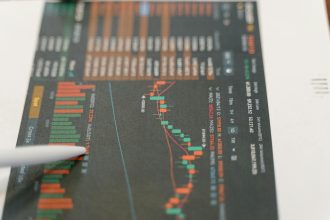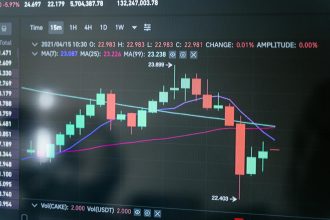Mastering Supply Chain Management: From Procurement to Waste Reduction
In today’s dynamic business landscape, the ability to navigate complex operational pathways is paramount. At the heart of this capability lies supply chain management, a critical discipline that orchestrates the flow of goods and services from origin to consumption. This holistic approach not only ensures efficiency but also champions sustainability by actively pursuing waste minimisation at every stage. From the initial procurement of raw materials to the final delivery of a product, a well-oiled supply chain is the silent engine of success.
Understanding and optimizing each component of this intricate network is no longer a luxury; it’s a necessity. Businesses that excel in supply chain management gain a significant competitive edge, fostering customer loyalty through reliable delivery and superior product quality. This comprehensive guide will delve into the core elements, from strategic procurement and innovative product management to the vital aspects of logistics and the crucial goal of waste minimisation.
The Pillars of Effective Supply Chain Management
A robust supply chain is built upon several interconnected pillars. Each element must be meticulously planned and executed to ensure the entire system functions harmoniously. Neglecting any one area can create bottlenecks and inefficiencies that ripple throughout the operation.
1. Strategic Procurement: The Foundation of Your Supply Chain
Procurement is where the journey of every product begins. It involves sourcing and acquiring the necessary goods and services from suppliers. Strategic procurement goes beyond simply finding the lowest price; it focuses on building strong, reliable relationships with vendors who can consistently deliver quality materials on time.
- Identifying and vetting potential suppliers based on quality, reliability, and ethical practices.
- Negotiating favourable terms and contracts to ensure cost-effectiveness and long-term partnerships.
- Implementing robust inventory management systems to avoid stockouts or overstocking.
- Leveraging technology for procurement automation and data analysis to identify cost-saving opportunities.
2. Product Management: Driving Innovation and Value
Product management sits at the nexus of market needs and operational capabilities. It involves guiding the lifecycle of a product, from conception and development to its market introduction and eventual retirement. Effective product management ensures that what is being supplied meets customer demands and is feasible to produce and deliver within the supply chain’s constraints.
- Conducting thorough market research to identify unmet needs and emerging trends.
- Collaborating with design and engineering teams to develop innovative and marketable products.
- Defining product roadmaps and feature sets that align with business objectives and supply chain capacities.
- Gathering customer feedback to continuously improve existing products and inform future development.
Optimizing Logistics and Distribution
Once a product is developed and materials are procured, the focus shifts to efficiently moving them through the chain. Logistics and distribution are the arteries of the supply chain, ensuring timely and cost-effective delivery to the end consumer.
The Art of Movement: Transportation and Warehousing
Choosing the right transportation modes and managing warehouse operations are critical for timely delivery and cost control. This involves a careful balance of speed, cost, and reliability.
- Selecting Appropriate Transportation: Evaluating options such as road, rail, air, and sea freight based on product type, destination, urgency, and cost.
- Efficient Warehousing: Designing and managing warehouse layouts for optimal storage, picking, and packing processes.
- Inventory Management Strategies: Implementing Just-In-Time (JIT), Economic Order Quantity (EOQ), or other strategies to balance holding costs with the risk of stockouts.
- Route Optimization: Utilizing technology to plan the most efficient delivery routes, reducing fuel consumption and delivery times.
Leveraging Technology in Logistics
Modern logistics are heavily reliant on technology. From tracking systems to advanced analytics, these tools provide visibility and control over the movement of goods.
- Real-time Tracking: GPS and RFID technologies allow for constant monitoring of shipments, providing transparency and enabling proactive problem-solving.
- Warehouse Management Systems (WMS): Software that optimizes inventory control, order fulfilment, and labour management within warehouses.
- Transportation Management Systems (TMS): Platforms that help plan, execute, and optimize the physical movement of goods, both inbound and outbound.
The Imperative of Waste Minimisation
In an era of increasing environmental consciousness and resource scarcity, waste minimisation is not just a good practice; it’s a strategic imperative. Integrating waste reduction efforts throughout the supply chain can lead to significant cost savings and enhance a company’s brand reputation.
Identifying and Eliminating Waste Streams
Waste can manifest in various forms across the supply chain, from excess materials and inefficient processes to spoiled goods and obsolete inventory.
- Overproduction: Producing more than is needed, leading to excess inventory and potential spoilage or obsolescence.
- Waiting: Delays in any part of the process, such as waiting for materials, equipment, or information.
- Transportation: Unnecessary movement of goods, increasing fuel consumption and emissions.
- Excess Inventory: Holding more stock than required, leading to storage costs and the risk of damage or obsolescence.
- Defects: Products that do not meet quality standards, requiring rework or disposal.
- Motion: Unnecessary movement of people or equipment within a facility.
- Over-processing: Doing more work on a product than is required by the customer.
Strategies for Sustainable Supply Chains
Implementing sustainable practices directly contributes to waste minimisation and overall supply chain resilience.
- Circular Economy Principles: Designing products for durability, repairability, and recyclability to keep materials in use for as long as possible.
- Supplier Collaboration: Working with suppliers to adopt sustainable practices and reduce their environmental footprint.
- Optimized Packaging: Reducing the amount of packaging used, opting for recyclable or biodegradable materials, and improving packaging design to prevent damage.
- Reverse Logistics: Establishing efficient systems for product returns, repairs, and recycling to recover value and minimize landfill waste.
- Data Analytics for Waste Reduction: Using data to identify patterns of waste and inefficiencies, enabling targeted interventions.
The Interconnectedness of Supply Chain Management, Procurement, and Waste Minimisation
It’s crucial to recognize that supply chain management, procurement, and waste minimisation are not isolated functions but deeply intertwined. Strategic procurement decisions directly impact the types and quantities of materials entering the supply chain, influencing potential waste. For instance, sourcing materials from suppliers with robust sustainability programs can significantly reduce waste at the origin.
Similarly, effective product management can lead to the design of products that are inherently less wasteful to produce, transport, and use. This includes considering the end-of-life phase during the design process. The overarching goal of supply chain management is to create a seamless, efficient, and responsible flow. Therefore, integrating waste minimisation principles into every facet of this management is essential for long-term success and environmental stewardship.
The future of business success hinges on building resilient, efficient, and sustainable supply chains. By mastering the intricacies of procurement, product management, logistics, and committing to rigorous waste minimisation, organizations can not only achieve operational excellence but also contribute positively to the planet.
Ready to transform your operations and achieve peak efficiency? Explore our expert solutions for optimizing your supply chain today!







